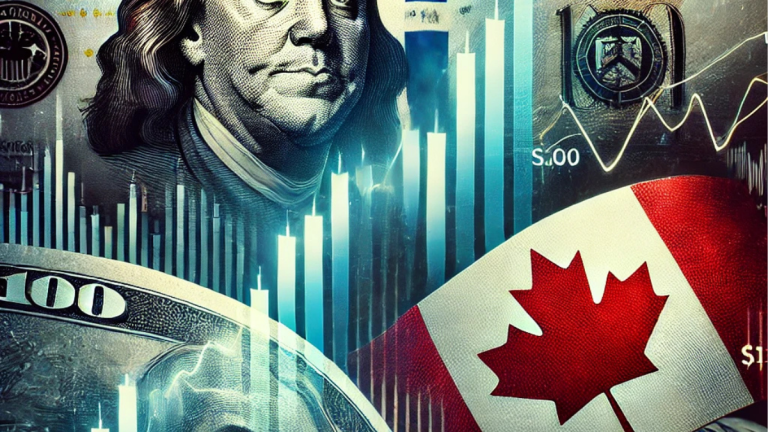Implications for the Economy: Tariffs Impact Currencies As U.S. President Continues Commitment to Implement Tariffs by Feb. 1
In a renewed turn of events, the Canadian dollar took a hit on Thursday as President Donald Trump reiterated his commitment to enforce the imposition of tariffs on imports from neighbours, Canada and Mexico, come Feb. 1. This announcement has seen the foreign exchange markets jolted, leading to a significant drop in the currencies of both these nations against the U.S. dollar, in the later part of the New York trading session.
Both the Canadian and Mexican currencies fell sharply – as much as 1 per cent against the U.S. dollar. This plunge occurred after President Trump confirmed to a cohort of journalists at the White House that he fully intends to keep his inauguration promise and impose trade restrictions this Saturday.
Tariffs Impact Currencies, As the U.S. Dollar Strengthens Amidst the Uncertainty
This profound drop hints at the “path of least resistance” as investors grapple with the uncertain, yet persistent, threat raised by the implementation of increased tariffs, according to Nathan Thooft, a senior portfolio manager at Manulife Investment. In the past weeks, there has been a significant degree of tension in the foreign-exchange arena, owing to the possible imposition of steep levies on Canadian and Mexican imports.
The dollar has soared remarkably post-Trump’s election back in November, a trend primarily attributed to investor expectation of tariffs giving the greenback a boost. This anticipated increase will drive the price pressures up and subsequently maintain an elevated level of interest rates in the U.S.
Opportunity to Unlock More Insightful Articles
This premium content piece is specifically curated for our esteemed subscribers. Subscribe now to get timely and insightful news from your city and around the globe from noteworthy writers like Barbara Shecter, Joe O’Connor, Gabriel Friedman, and much more from the world-class Financial Times. Gain online access to a plethora of articles from reputed publications such as Financial Post, National Post, and an additional 15 news platforms across Canada through a single Post ePaper – a digital replica of our print edition available on any device. Also, take advantage of access to engaging puzzles, including those from the New York Times.
The Tug-of-War: How Tariffs Impact Currencies Amid Global Trade Disruptions
The onslaught of uncertainty in the global trade environment is holding currencies in a chokehold. The US dollar, the world’s primary reserve currency, is finding itself complimented with newfound fortitude as traders seek secure shelters amidst the storm.
Among the casualties in this currency war, the Mexican currency has been dealt a severe blow by the Trump administration’s policies. Parallel to this, the Canadian dollar has been on a downward spiral, recording a six per cent depreciation against the curtain-calling greenback last quarter. The most recent loss of strength leaves the Canadian dollar at its weakest point since the year 2020.
Tariffs Impact Currencies: A Look at The Canadian and The Mexican Scenario
The erratic weather in the global financial atmosphere forecasts a yet more challenging future for the Canadian dollar. Should import taxes skyrocket to a drastic 25 per cent, the Canadian dollar may find itself traversing an unprecedented downward territory for the first time in over two decades.
This potential downfall could trigger an aggressive response from the Bank of Canada in the form of rapid interest rate cuts. These expedited moves, however, could drag the economy deep into the trenches of a debilitating recession. Conversation among the strategists at Wall Street hints at the alarming thought of the loonie possibly nearing its historic nadir dating back to 2002, a consequence of stiff tariffs and Canada’s retaliatory measures.
Discover the impact on Canadian dollar here
The dominoes tumble further down south as well, with Mexico feeling the currency crunch. Despite resilient performance at the onset of the year, 2024 morphed into a nightmare for the peso, marking its weakest year against the dollar since the gut-wrenching global financial crisis took place.
With the prospect of President Trump reprising his role at the White House, traders are girding themselves for yet more bumpy rides. The imposition of a sweeping tariff on Mexico could depreciate the peso by a significant 10 per cent against the greenback. This prediction comes from the desk of Deutsche Bank economist Francisco Campos.
This precarious situation may urge money managers to consider pulling out their investments from Mexican dollar bonds. They might also start to prepare for potential share losses in companies whose earnings are propelled by exports to the US market.



















